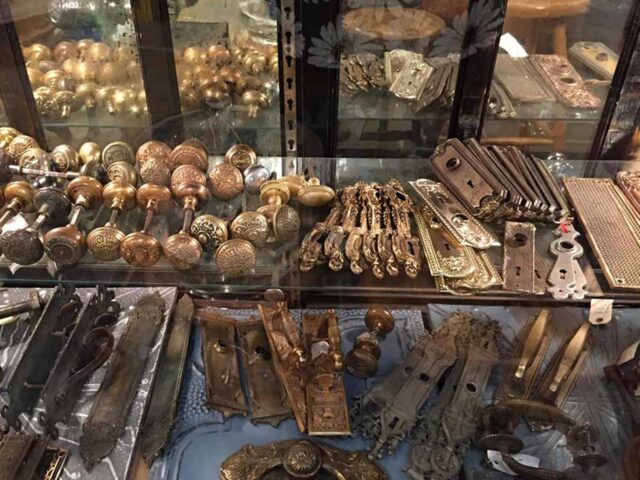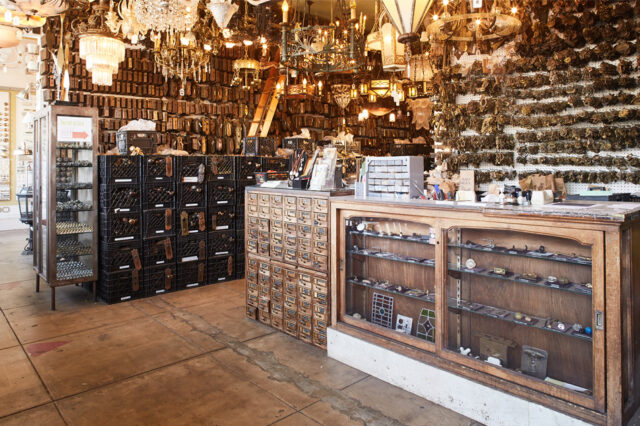
Antique hardware is one of the most popular categories of collectibles which makes it a perfect hobby. You’ve probably seen pieces of antique hardware at flea markets and garage sales and they are often marked up far beyond the original price. But is it really worth investing in something that’s antique only in name?
Antique hardware is anything from bakelite light switches to wrought iron doorknobs. Unfortunately, many of these vintage items are not actually from the early 20th century. Faux antique hardware can be created with metal plating, pictures, or even just a vintage patina. Don’t be fooled by a good deal, if an item looks too good to be true, it probably is.
If you are considering purchasing antique hardware, the first step is to identify what make and model of hardware your home is likely to have. Next, look for retailers that specialize in vintage products. Finally, consult with professionals before making your purchase. By doing these three things, you can avoid buying fake antique hardware and ending up with an expensive mistake.
Do you love antiques, but don’t know where to start when it comes to shopping for them? If so, you’re not alone. It can be a challenge to tell an authentic antique piece from a reproduction. This guide will show you how to identify and buy antique hardware. Here are some tips to get you started.

1. Skim through auction websites
By looking at auctions, you get a sense of what people are bidding on and you may find a matching piece much cheaper than if you were to purchase it from a department store. There are a few things that you should always do when browsing through an auction website in order to ensure that you are making an informed purchase. The first step is to skim through the items and look for any markings that may indicate authenticity.
Next, pay close attention to the condition of the hardware. If it seems as if the piece has been damaged or altered in any way, it is likely that it is a counterfeit product. Finally, make sure to get a receipt for your purchase in case there are any issues with it later on.
By taking these simple precautions, you can minimize your chances of purchasing a counterfeit piece of antique hardware.
2. Go to antique stores
Another way to authenticate your hardware is to go to an antique store and look at the pieces side by side. By doing this, you can see whether different pieces have similar design features or not. Finally, if you feel comfortable with the seller, you can ask them for a handwritten appraisal of the hardware.
Antique stores allow you to physically touch and examine the pieces before making an investment in them. This is valuable information because it allows you to make sure that the hardware is in good condition (or not at all), has not been altered in any way, and is made from sturdy materials.

3. Compare prices online and in person
If you’re able to find an item online that you’re interested in purchasing, compare the price to what similar pieces go for at local antique stores or on auction websites before making your purchase. You may be able to get a better deal by going directly to an antique store rather than buying it online.
When you go to purchase antique hardware, it’s important to get as much information as possible. This includes checking prices online and in person. Sometimes, the prices online may be more than the prices in person, which can save you a lot of money. Plus, you can always check the authenticity of what you’re buying.
4. Check whether the piece is signed or inscribed
What makes antiques so special is the time and effort that has gone into their assembly. While some manufacturers may sell replicas of antiques, it is important to verify if the piece you are purchasing is signed or inscribed. If the hardware has been tampered with in any way, chances are it won’t be authentic.
Antique hardware can often include signatures or inscriptions that give insight into the history of the piece or its creators. When shopping for old hardware, always check around for any markings or engravings so that you know exactly what you’re getting yourself into!

5. Test the Hardware Out
Run your fingers along the metal surface – if it feels hot to the touch, it’s probably brass or copper and may be too delicate for regular use. If it doesn’t feel hot, it may still be brass or copper but more likely due to oxidation over years of wear & tear not being taken care of as it should have been.
The manufacturer may have used cheaper materials in order to increase sales, which could lead to the piece failing sooner rather than later. Also, if the hardware is not genuine, it could be a counterfeit product which could actually be dangerous.
6. Ask the seller questions
It is always advisable to ask any kind of questions about the history of the piece and whether it has ever been exposed to water or other elements. Many counterfeit pieces have a false patina or altering of markings that may indicate they were not properly stored or handled in their lifetime. You might even hear good stories behind it if you are more interested in its history.
Whenever you’re in the market for vintage hardware, it’s important to be aware of what’s authentic and what’s not. Many pieces of antique hardware that are sold online may be counterfeit, so it’s important to be able to identify these items. Authentic antique hardware is a valuable commodity, and not all sellers are honest about their inventory.

It is good to be able to see the signs that indicate an auction house or dealer is trying to sell you a replica. There is no easy path that you can take in order to purchase such a unique piece, but if you follow some of the tips we shared with you today, you will be close to getting authentic hardware.









